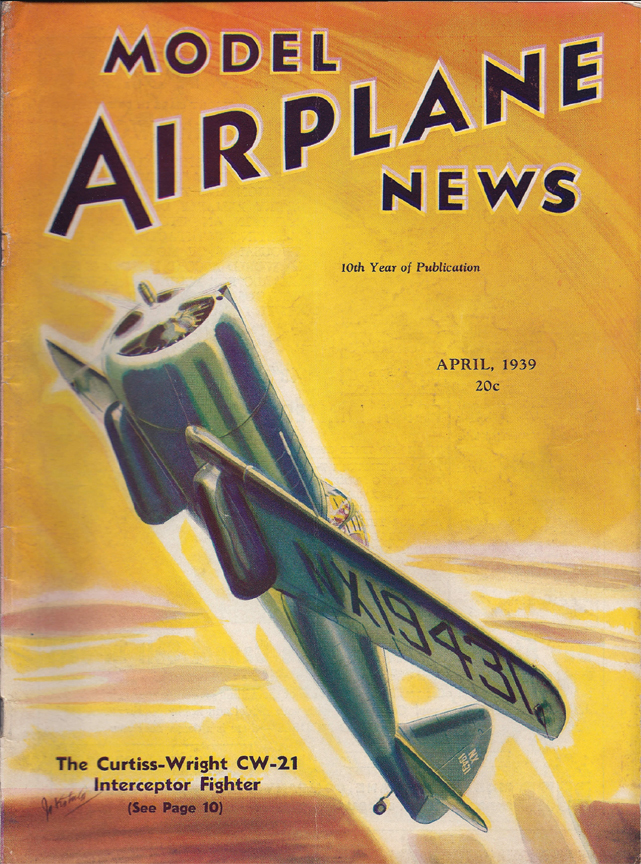Kyseessä oli Curtiss-lentokonetehtaan vientiin tarkoittama hävittäjä, jonka prototyyppi lensi ensilentonsa 22. syyskuuta 1938. Kone oli panssaroimaton, poiketen muista koneista, joita yhdysvalloissa tuohon aikaan rakennettiin. Koneen nousukyky oli sensijaan todella huomattava, sen kilpailijoihin verrattuna.
Kauppaa ei aktivoitu, koska Ilmavoimien komentaja (ex Laivasto-Upseeri) ei suostunut muuttamaan itse tekemäänsä päätöstä ostaa suomeen pommikoneita.
Tämä henkilö oli Jarl Frithof Lundqvist joka vuodesta 1932 oli ilmavoimien täysin kokemusta vailla oleva komentaja, joka kannatti vesitaso-kone hankintaa suomelle pitkään, virkaan tulonsa alkuvuosien jälkeenkin.
Maavoimissa hän oli palvellut Kenttätykistörykmentti 3:n komentajana.
Lentokoneista tai ilmavoimista hänellä ei ollut minkäänlaista edes lento-kokemusta.
Monet Ilmavoimien esikunnan osastopäälliköistä olivat merilentoasemien majureita
Hävittäjälentäjät, jotka olivat olleet monesti koulutus, tutustumis ja maaliin ammunta kokeissa Ranskassa ja Saksassa, sekä tottuneet parempiin koneisiin, olivat erittäin pettyneitä Ilmavoimien esikunnan päätöksiin, mutta onnistuivat toistuvilla virallisilla valituksillaan aikaan saamaan 13 kpl Fokker XXI lisäkoneen hankinnan.
Curtiss CW-21 konetta oli myyty Kiinaan kolme valmiina ja 27 osina. Ensimmäinen tuotantokon lensi 20. maaliskuuta 1940. Huhtikuussa 1940 Hollanti tilasi Itä-Intian ilmavoimilleen 24 CW-21B -hävittäjää. Koneet toimitettiin loka-joulukuussa 1940 Jaavalle, jossa ne osallistuivat taisteluihin Japania vastaan alkuvuonna 1942.
Curtiss CW-21 koneita ei koskaan hankittu suomen ilmavoimille.
-----------------------------------------------------------------------------------------------
Miehistö: Yksi
Pituus: 27 m 2 ½ (8,29 m)
Kärkiväli: 35 ft 0 in (10,66 m)
Korkeus: 8 ft 2 in (2,48 m)
Siiven pinta-ala: 174,3 m ² (16.19 m²)
Tyhjäpaino: 3382 lb (1534 kg)
Lento paino: 4500 lb (2041 kg)
Moottori: 1 × Wright Cyclone R-1820-G5 yhdeksän-sylinterinen ilmajäähdytteinen tähtimoottori, 850 hv (634 kW)
Huippunopeus: 314 mph (273 kN, 505 km / h) 12200 jalkaa (3700 m)
Matkanopeus: 282 mph (245 kN, 454 km / h)
Range: 630 km (548 NMI, 1014 km)
Palvelu kattoon: 34300 jalkaa (10500 m)
Kohoamisnopeus: 4500 ft / min (22,9 m / s)
Aseistus: 2 × 0,50 tuumaa (12,7 mm) + 2 × 0,30 tuumaa (7,62 mm)
-----------------------------------------------------------------------------------------------
The Curtiss-Wright Model 21 (also known as the Curtiss-Wright Model 21 Demonstrator, the Curtiss-Wright CW-21 Interceptor, the Curtiss-Wright CW-21 Demon) was a United States-built fighter interceptor, developed by the St. Louis Airplane Division of Curtiss-Wright Corporation during the 1930s.
In 1938, George A. Page, head of the Saint Louis Airplane Division of Curtiss-Wright, decided to develop a fighter aircraft based on Carl W. Scott's two seater Model 19.
Page's concept was a lightweight fighter interceptor with as high a rate of climb as possible in order to allow bomber formations to be attacked with minimal warning. If faced with fighter opposition, it was intended not to dogfight, but to use its superior climb rate to escape.
While this was a direct contradiction to the United States Army Air Corps′ requirements for fighters (which stressed low-level performance), this did not concern Page, since the new fighter was intended for export.
Detailed design of the new fighter, the Model 21, or CW-21, was carried out by a team lead by chief engineer Willis Wells. It was a single-seat, all-metal cantilever low-wing monoplane with retractable tailwheel landing gear, where the mainwheels retracted rearwards into fairings under the wing.
The fuselage was a semi-monocoque structure that tapered sharply behind the pilot's cockpit. It was powered by a 1,000 hp (750 kW) Wright R-1820-G5 nine-cylinder air-cooled radial engine. It was designed to carry various combinations of two .30 in (7.62 mm) or .50 in (12.7 mm) machine guns, mounted in the nose and synchronized to fire through the propeller, while no armor or fuel tank protection was fitted in order to save weight and hence improve performance.
The prototype first flew on 22 September 1938, carrying the civil experimental registration NX19431.
Although the CW-21 was not commissioned by the U.S. military, it was test flown at Wright Field in Dayton, Ohio. The Army Air Corps immediately rejected the aircraft, with one officer commenting that it took a genius to land it.
Curtiss-Wright company records list a single CW-21A in the company's inventory until 1945. No additional information has been located, and its fate is unknown

Ei kommentteja:
Lähetä kommentti
Kaikenlaiset kommentit ovat tervetulleita.